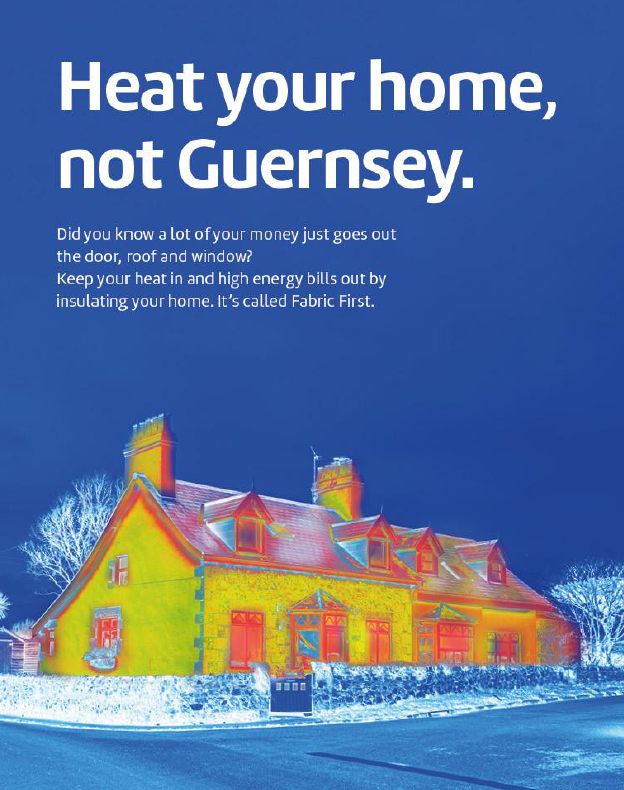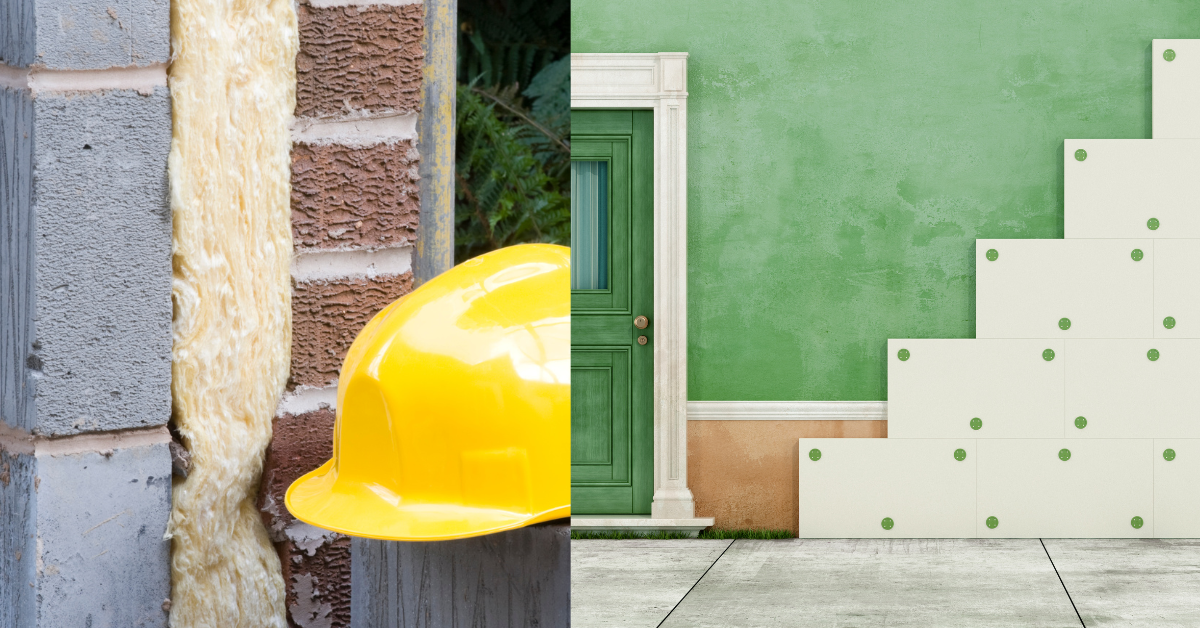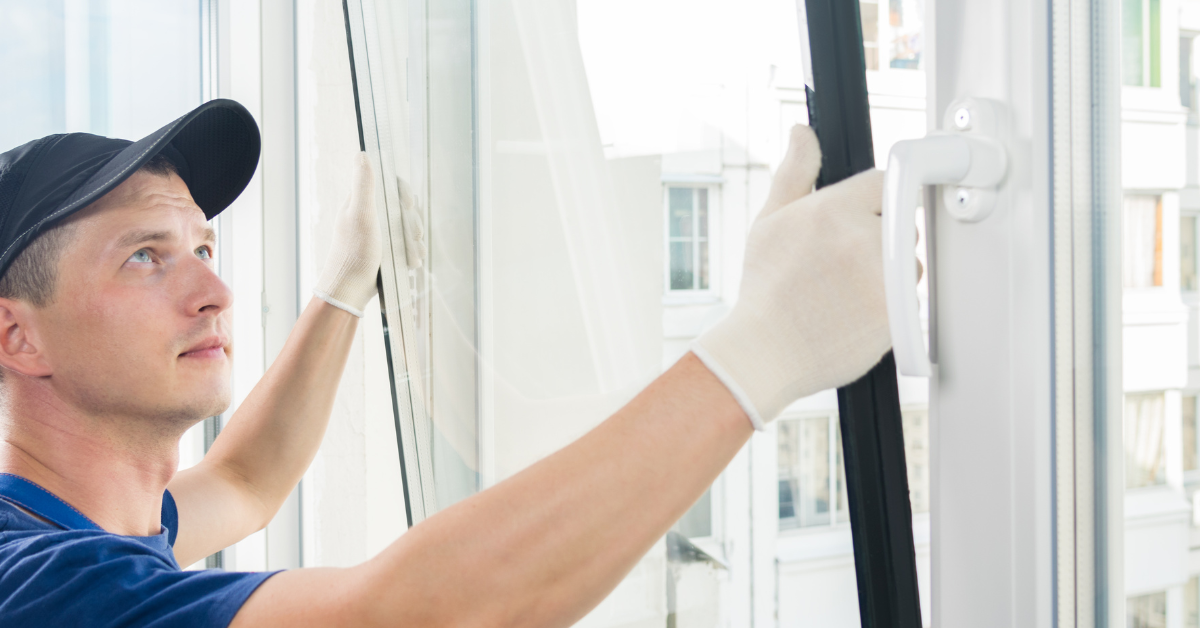We've broken down information about insulation to help show how investing in your property will help make sure you pay to heat your home, not Guernsey.
What is the Fabric First approach?
Some of our Guernsey Electricity employees recently attended a Decarbonising Homes conference which majored on the UK's "Fabric First" approach. But what does this mean and how does it apply to us in Guernsey?
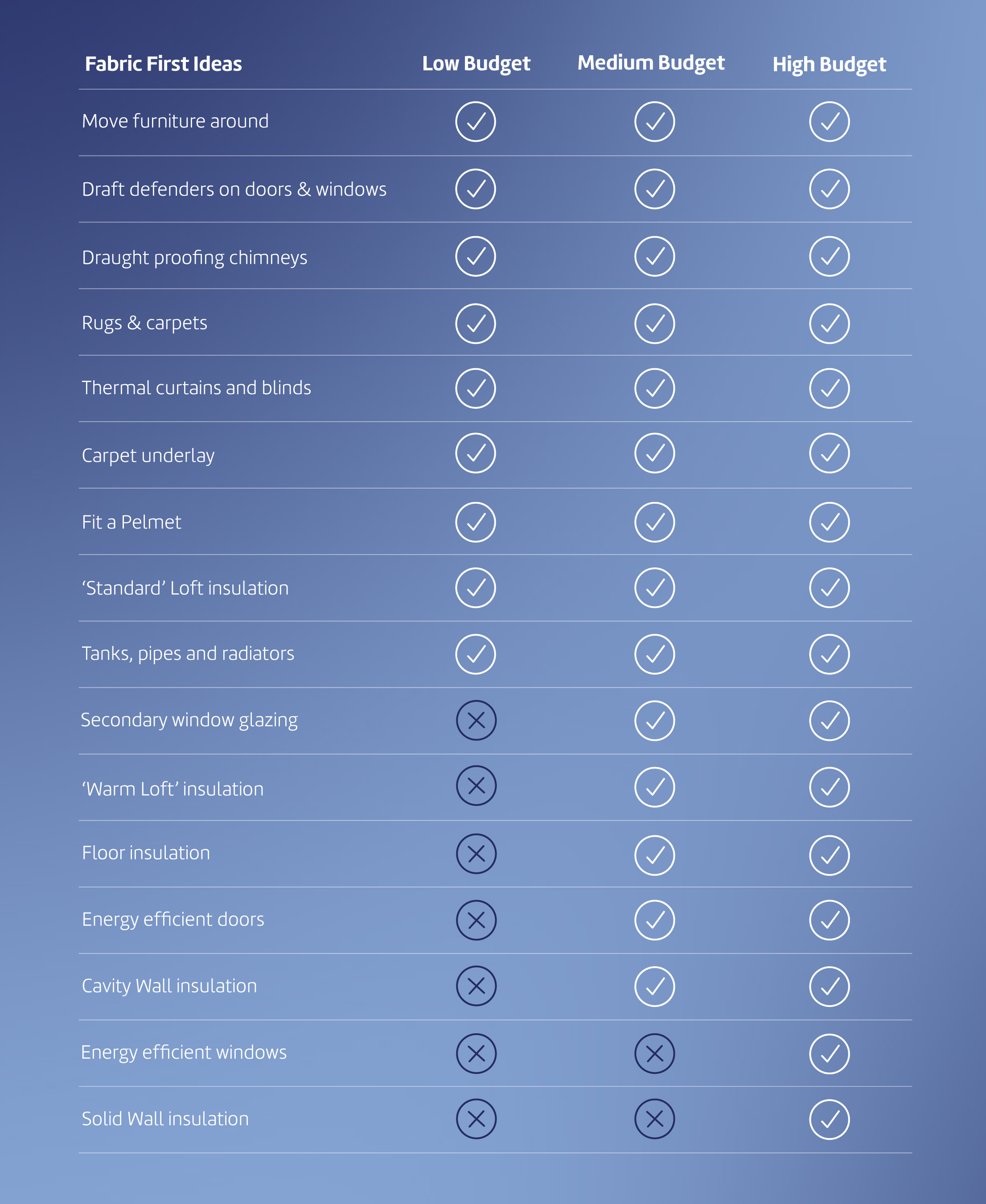
Put simply, householders should take care of insulating the fabric of their homes first. Then consider energy efficient appliances such as electric heating and air source heat pumps. The overall result will be significantly lower utility bills and reduced carbon emissions.
The 'fabric' of your building refers to areas such as the doors, roof, and windows. Take care of these first to save money and lower carbon emissions.
Maximising the performance of components and materials that make up the building fabric itself will help reduce costs, improve energy efficiency and reduce carbon emissions. This reduces the need for unnecessary and costly energy consumption through heating - just heat what you need.
Fabric First methods include:
- Optimising solar gain through openings and shading
- Maximising airtightness
- Increasing levels of insulation
Here we'll break down some information specifically about insulation to show how investing in your property will help make sure you pay to heat your home, not Guernsey.
Why is everyone talking about Heat Loss?
Heat loss equals money. A heating system will do two things:
1) Heat your rooms to a comfortable temperature such as 21°C
2) Replace all the heat lost through the fabric of your property such as walls, roofs and windows to maintain that initial temperature.
This means you'll pay for a cozy lounge, and all the heat that gets drawn out of your property through the uninsulated fabrics. Over time this adds up to a huge amount of wasted money; the more heat you keep in, the less you need to pay for.
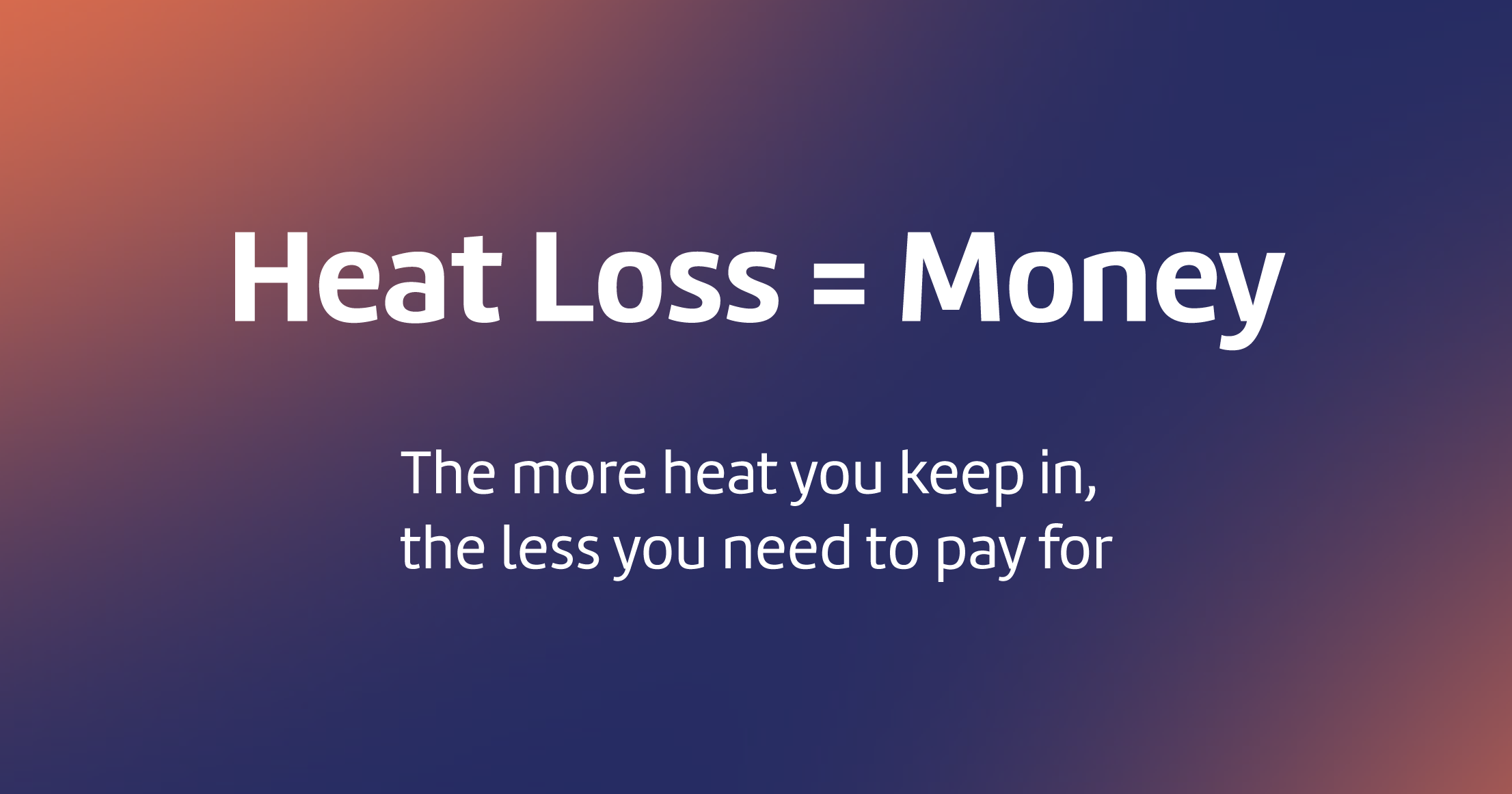
Do I need insulation?
Every property loses heat. This diagram shows how much of your total heat loss each area of your property could be responsible for.
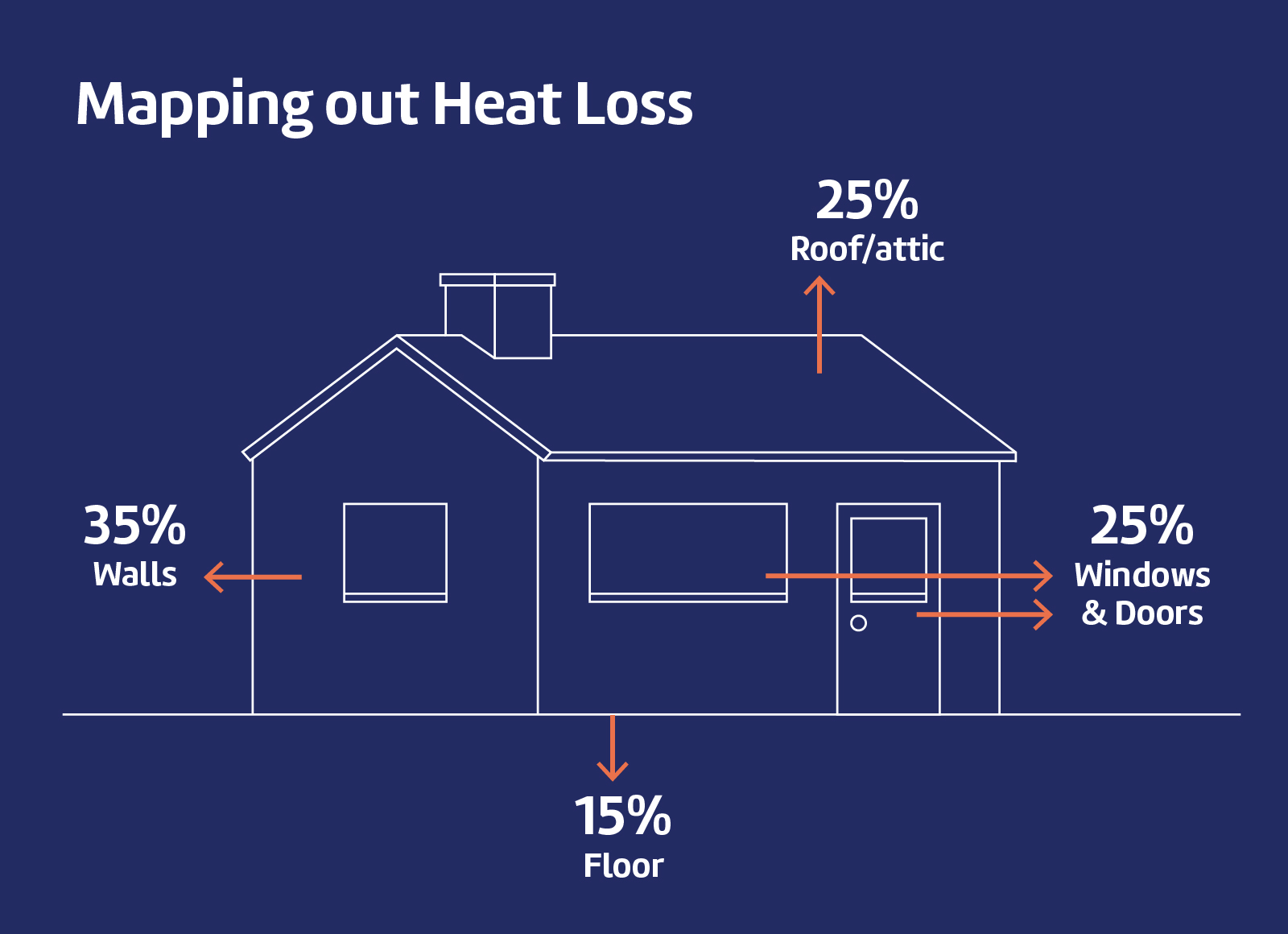
Source: https://www.sciencedirect.com/topics/engineering/heat-loss-in-building
When customers enquire about switching to electric heating, our team surveys their property to establish how much heat the property is losing. This means the customer gets the correct boiler capacity installed for their specific heat loss needs; an uninsulated property will need a bigger boiler* than a property with good insulation.
Interested in an air source heat pump? These are one of the most cost and carbon efficient heating systems on the market and work best in insulated properties. Find out more about 300% efficient air source heat pumps.
*This theory also applies to heating systems powered using oil and gas.
Important - please check for damp
Insulation prevents heat escaping from living spaces, meaning certain areas such as the attic may become cooler. If your property already suffers with damp or condensation, insulation could potentially make the situation worse.
Please ensure your property is assessed for damp problems before having insulation installed.
Our Heat Map Explained
Thermal imaging cameras use colour to show the relative temperature of objects.
Red: High heat loss areas that will need to be insulated first
Yellow: Moderate heat loss
Blue: Lower heat loss
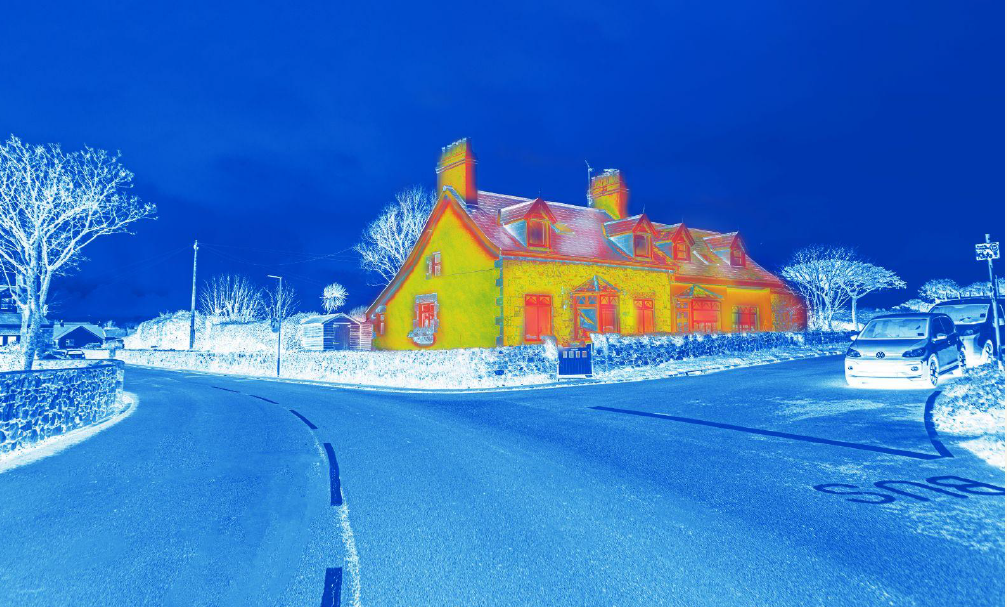
This property would need to consider insulating their loft and windows as a first step to significantly reduce their heat loss, and longer term consider investing in interior wall insulation as the exterior is made of granite.
How much money could I save?
This will depend on:
- Property age and construction type
- Types and quality of chosen insulation
- How much heat the property uses and loses
The average electric heating customer in Guernsey spends around 36% of their annual electricity bill on their heating. This is approximately £570 a year. Bearing in mind this is an average figure for electric heating only, your own heating bill could be far higher.
Insulating your property will help bring this figure – and your running costs - down. And if you want to bring the light and power bill down too, have a look at these effective tips to power your life for less.
*We only have access to electric heating customer data, however insulation is an effective way to save on running cost for all types of heating. Data used as of 1 October 2021 to 30 September 2022
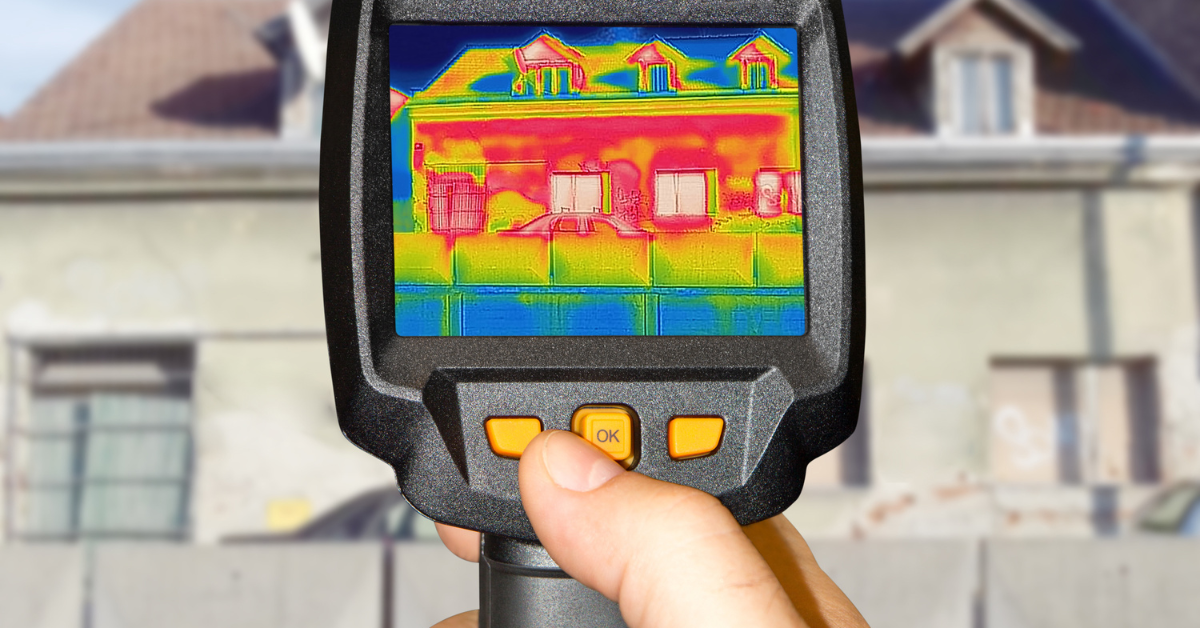
How much will insulation cost?
Insulation isn't just expensive wall and roof alterations.
Larger jobs such as wall insulation will need a specialist installer to survey your property and provide you with an accurate quote, however there are also lower budget 'fabric first' options that will all add up savings on your utility bill.
The table below is designed to give you a rough idea of insulation options available depending on your budget.
We recommend factoring in as many Fabric First options as your budget allows to really make the most of the savings insulation can bring.
If you're able to invest in external wall insulation, it's also a good idea to make smaller changes around the house such as moving furniture and getting in draught defenders where needed. If you're not in a position to make a big investment, there are several lower-cost options to consider which will knock the units off your heating bill - provided you don't start spending more as a way to celebrate!
Read more about the Rebound Effect
To learn more about each type of insulation listed here, please click the title links.
|
INSULATION YOU CAN DO ON YOUR BUDGET |
|||
|
Fabric First ideas |
Low Budget |
Medium Budget |
High Budget |
|
Yes |
Yes |
Yes |
|
|
Yes |
Yes |
Yes |
|
|
Yes |
Yes |
Yes |
|
|
Rugs and carpets |
Yes |
Yes |
Yes |
|
Yes |
Yes |
Yes |
|
|
Yes |
Yes |
Yes |
|
|
Yes |
Yes |
Yes |
|
|
Yes |
Yes |
Yes |
|
|
Thermal curtains and blinds |
No |
Yes |
Yes |
|
No |
Yes |
Yes |
|
|
No |
Yes |
Yes |
|
|
No |
Yes |
Yes |
|
|
No |
Yes |
Yes |
|
|
No |
No |
Yes |
|
|
No |
No |
Yes |
|
|
No |
No |
Yes |
|
What are the benefits of insulation?
Lower heating bills
No matter if you’re on electric, oil, gas or solid fuel heating, insulating your property will help keep your running costs down. Part of the Fabric First approach, insulation is recognised as one of the most effective ways to help save money on everyday utility bills.
Helping the environment
Generating heat for your home will produce carbon emissions at some stage. Lifecycle carbon emissions take into account various stages including production and usage, meaning even the most sustainable heating types have a carbon footprint. Produce less heat, produce less carbon emissions.
Escaped heat also contributes to global warming as all those extra heat molecules will add to the greenhouse effect.
Increase property value
Price, location, condition and energy efficiency are some of the highest considerations for prospective property buyers. Help prepare your property for a future market demanding more sustainable and efficient homes with lower running costs.
Lower noise pollution
Alongside contributing positively to the environment, insulation helps reduce noise from both escaping and entering your building.
What types of insulation are there?
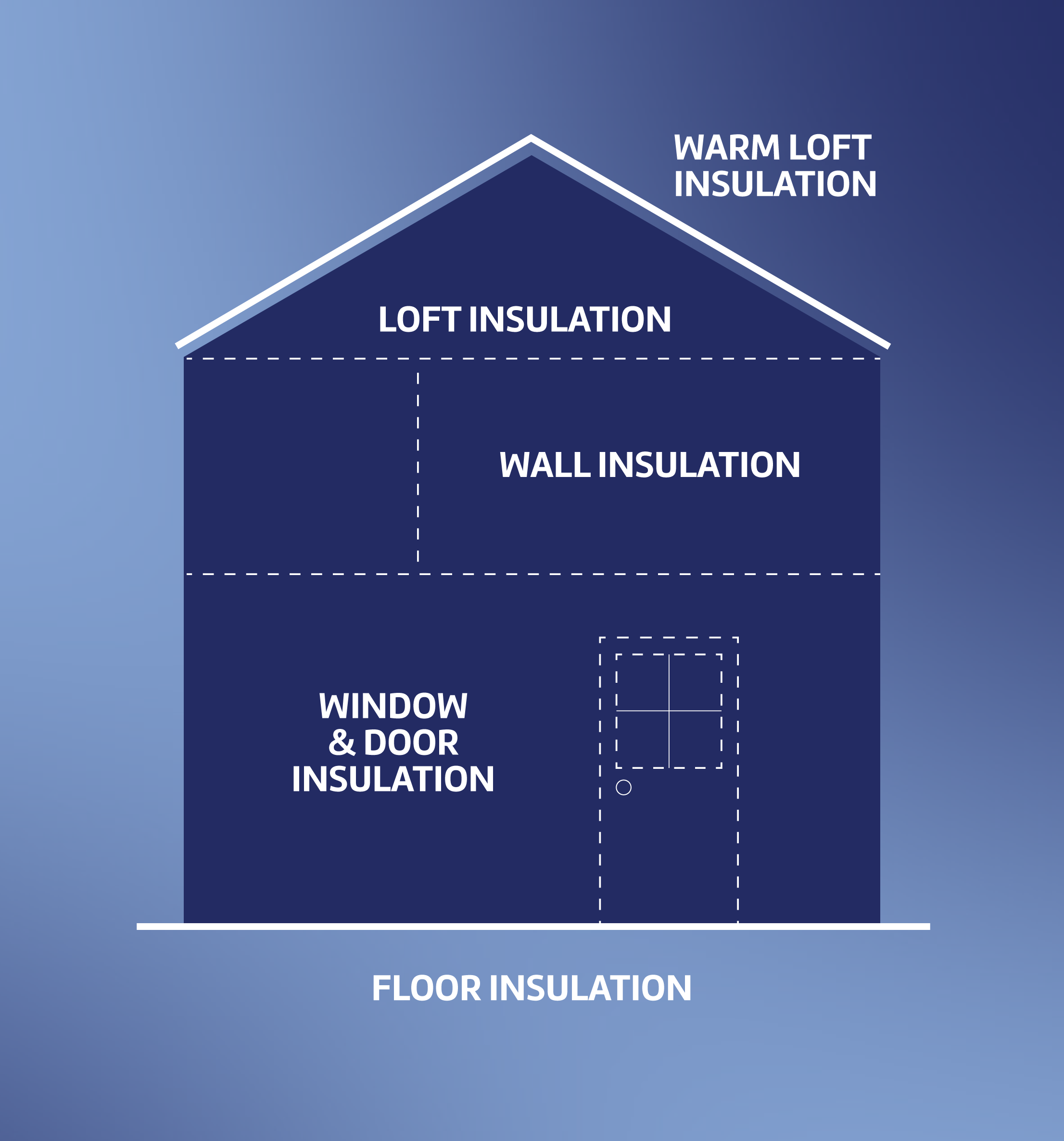
Loft Insulation
According to the Energy Saving Trust, a home without loft insulation loses a quarter of its heat through the roof. This means installing loft insulation is an effective way to reduce heat loss and bring down your utility bills.
Installing standard loft insulation is a relatively straightforward task and can be done yourself. And with a lifespan of around 40 years, it's estimated to shave around £150 a year off your heating bills.
Standard Loft insulation: if your loft is easy to access and has no damp or condensation problems, it’s possible to do this yourself using around 270mm of mineral wool insulation installed in layers. This can either be done by a professional or as a DIY job.
Warm Loft insulation: have a specialist contractor fit rigid insulation boards between and over rafters, especially if you're planning to convert the loft space into a room
Places like Norman Piette and B&Q sell loft insulation if you're opting for the DIY route, or for a professional job most building contractors should be able to do this for you.
Wall insulation
In general, houses built in the last 20 years or so in Guernsey already have some wall insulation as part of the building regulations. But what type of wall insulation would your property need? If you know when it was originally built, you might find this information helpful.
| Pre-1950 | Solid blockwork or granite construction |
| 1950's and 1960's | Introduction of cavity wall construction in Guernsey |
| 1992 | Insulation started to be introduced by regulation |
| 1995 | The insulation standards were then upgraded for dwellings |
| 2002 | A new edition of Part L - Conservation of Fuel and Power - was introduced and insulation levels were improved again |
| 2012 | The local Guernsey Technical Standard was introduced and since that time, the thermal performance levels have gradually increased in line with Part L in the UK |
Source: Guernsey Planning & Building Control
Cavity Wall insulation: these are properties built of two walls with a gap in between. Insulation is installed by drilling holes in the exterior and having insulation blown inside.
Solid Wall insulation: these single wall constructions can still be insulated.
- Internal Wall insulation: having a rigid insulation board fitted to the inner wall, or building a stud wall filled with insulation material such as mineral wool fibre
- External Wall insulation: fixing a layer of insulation material to the outer wall, then covering with a special type of render or cladding. The finish can vary, for example smooth, pebble-dashed or brick slip design.
In terms of effectiveness, external wall insulation is the best option. Like a glove, it will encase the entire wall space in insulation to keep heat in and avoids issues with weak heat loss points called 'cold bridges.' However external wall insulation is an expensive option and not realistic for all households.
Window and door insulation
Before replacing windows and doors, first check that your property isn't a listed building as this may prevent you from changing them. See Secondary Glazing if you know your property is listed.
Protected Trees, Buildings & Monuments
Energy-efficient windows are assessed to allow for heat loss, draughts and solar gain and there are a few options to help prevent heat loss through windows.
Double glazing: two sheets of glass and a gap filled with insulating inert gas
Triple glazing: three sheets of glass and two gaps filled with the inert gas
Secondary glazing: when double or triple glazing isn't possible, secondary glazing uses a second pane of glass or other transparent material inside an existing window to help reduce heat loss. This is often an option used for listed buildings or when a budget can't stretch to double or triple glazing.
Fit a pelmet: this is a shelf or a box above your window that covers the top section of your curtain and helps prevent warm air in the room contacting the glass in the window.
Energy-efficient doors: new external doors generally contain integrated insulation to comply with regulations, plus effective draught proofing can also be used such as around seals and the letterbox
Tanks, pipes and radiators
Keep your water hot for longer
Insulate an exposed hot water tank using a jacket and cover exposed pipes between your hot water cylinder and boiler with foam tubes.
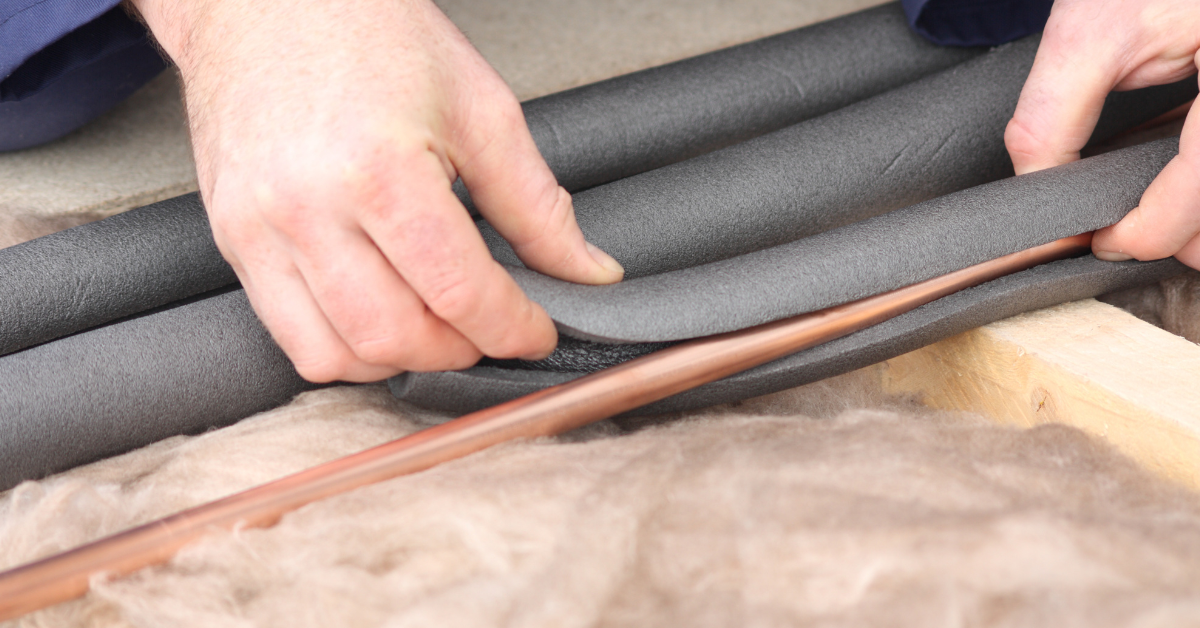
Keep heat in the home.
If your radiator is on an external wall, try installing a reflector pad behind it. They reflect heat back into the room rather than through an external wall. Also putting a shelf above a radiator helps direct heat into the room, particularly if it’s beneath a window
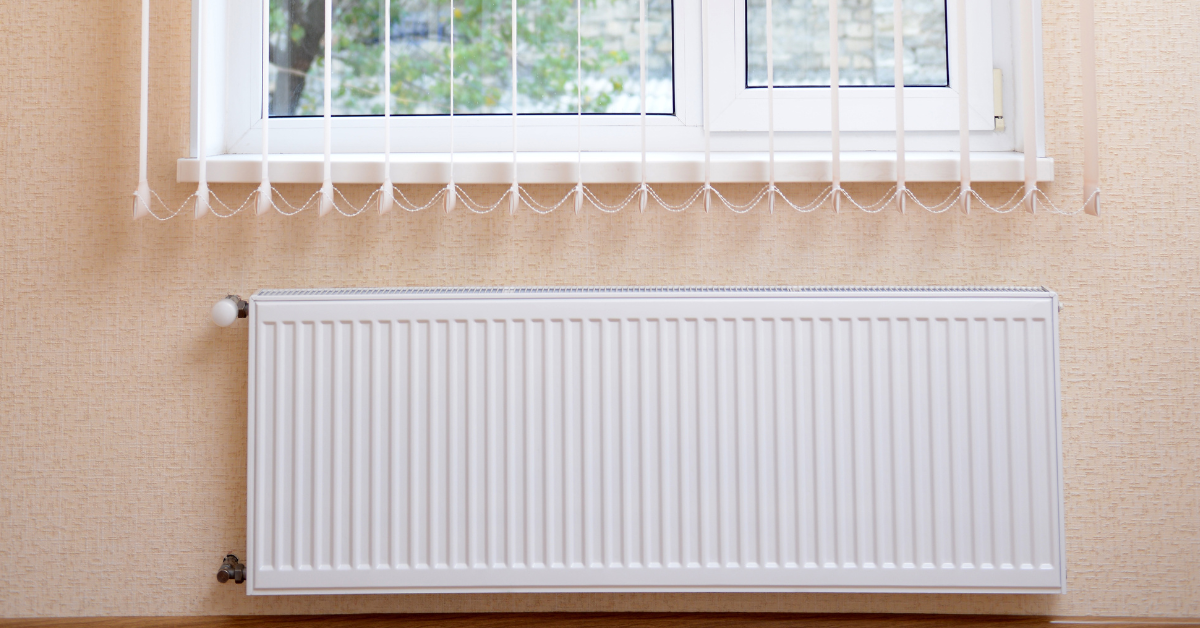
Floor insulation
If you’d like underfloor heating, it’s important to have floor insulation beneath the heating cables to make sure no heat gets lost. If you just want to insulate your floor, the insulation options will depend on how your floor was made.
- Solid concrete floors: some properties have ground floors made of solid concrete. Those built more recently will have rigid insulation incorporated within the concrete slab. In older properties, the floor can be insulated when it needs replacing or can have a rigid insulation laid on top.
- Suspended timber floors: older properties are more likely to have timber floors. These can be insulated by lifting floorboards and laying either rigid or mineral wool insulation supported by batons or netting in between the joists.
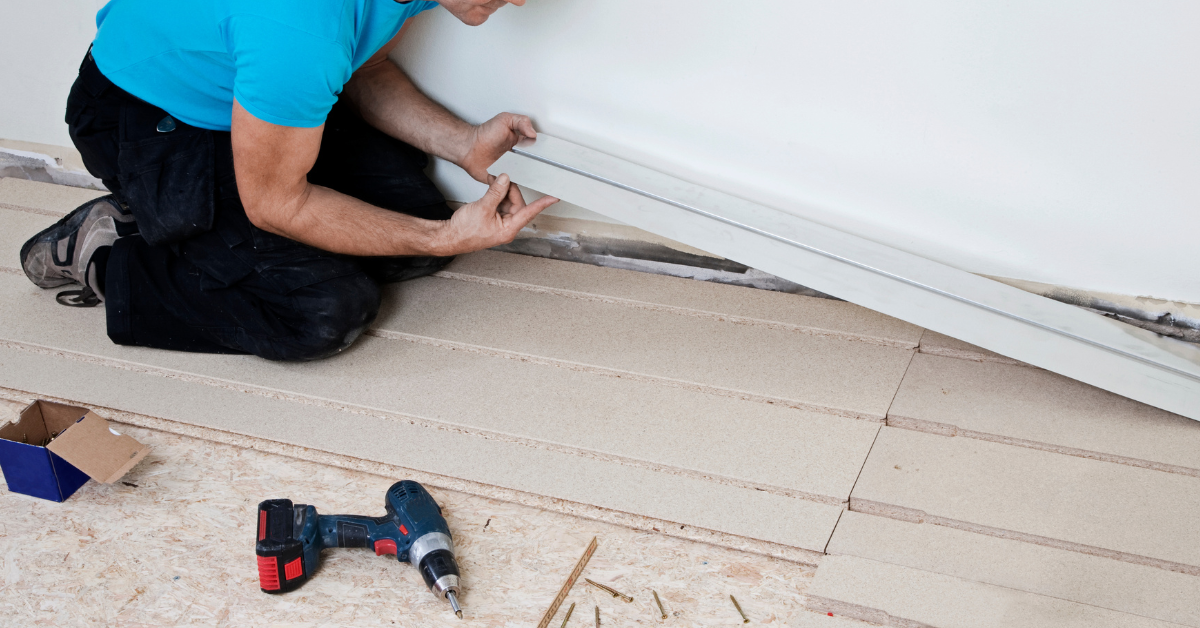
Want to find out how others are saving money on their electricity bills? Click to find out how you can power your life for less








